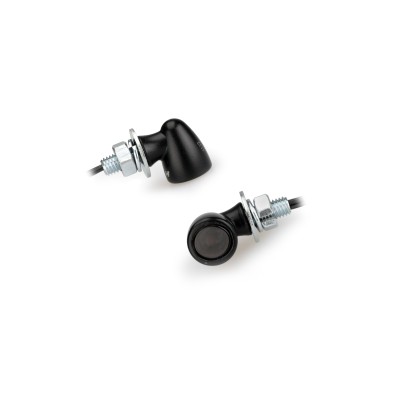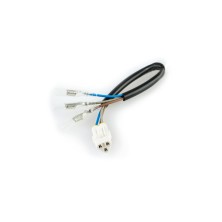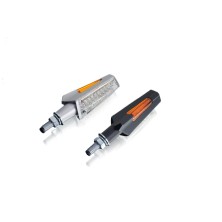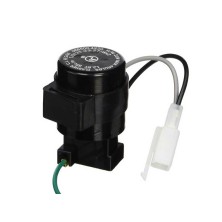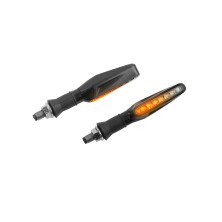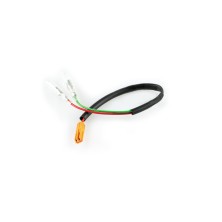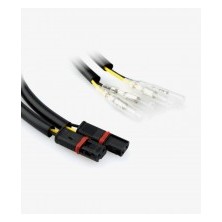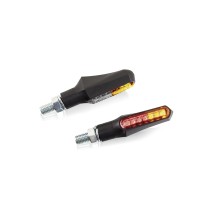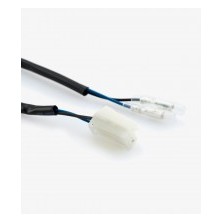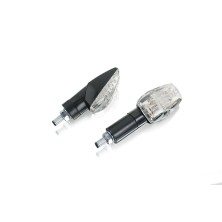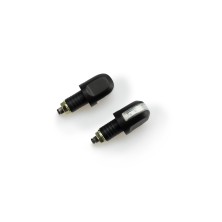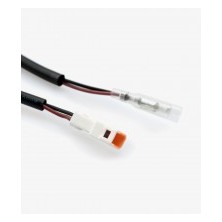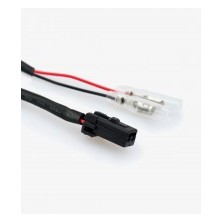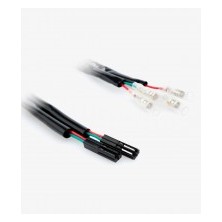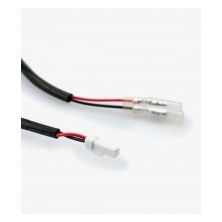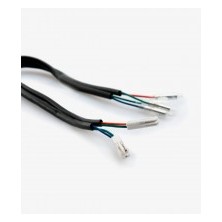- On sale!
PUIG OLDE 21446N TURN SIGNALS
Recibe este producto sin gastos de envío
PUIG OLDE 21446N TURN SIGNALS
Replace your motorcycle's turn signals with Puig's Olde turn signals.
Approved
Set with black smoked glass Ø1.2mm
1.5 mm long X 1.5 mm wide
Thread: M6
12V-2.7W
6mm thread. It can only be mounted by drilling the rear fender of the motorcycle. It cannot be fixed to the point where the original turn signal is fixed.
Product approved with LED bulbs with transparent glass (Ø1.2mm) and black color. Turn signal function.
PUIG OLDE 21446N TURN SIGNALS
Replace your motorcycle's turn signals with Puig's Olde turn signals.
Approved
Set with black smoked glass Ø1.2mm
1.5 mm long X 1.5 mm wide
Thread: M6
12V-2.7W
6mm thread. It can only be mounted by drilling the rear fender of the motorcycle. It cannot be fixed to the point where the original turn signal is fixed.
Product approved with LED bulbs with transparent glass (Ø1.2mm) and black color. Turn signal function.
Technical Information Turn signal connection:
Most motorcycles use bimetallic relays. Their frequency (which is what sets the rhythm of the turn signals), depends on the amperage that circulates through the circuit. When replacing the original turn signals with others of a different power, we vary the amperage that circulates through the circuit and consequently we vary the blinking frequency of the turn signals. If, on the other hand, the motorcycle uses electronic relays (whose frequency is independent of the amperage that circulates through the circuit), the change of turn signals should not affect the blinking frequency.
· Note: if you are unsure of which relay your motorcycle uses, it is advisable to mount the turn signals and check the blinking frequency.
If we replace the original turn signals with others that also use incandescent bulbs, we must check that they have the same power. If it varies, we must replace the turn signal bulbs with others of the same power as the originals. In our catalogue we have boxes of bulbs of different powers.
If we replace the original turn signals with LEDs (of a much lower power than incandescent bulbs), we have two options to balance the blinking frequency:
1. Incorporate a resistor in parallel in the circuit on the right side and another in the circuit on the left side. If we replace all four turn signals, we must use resistor Ref. 4298O. If, on the other hand, we only replace two turn signals (one on each side) we must use resistor Ref. 5873O.
A diagram for their parallel connection is supplied with the resistors.
· Note: in most models, the use of resistors prevents the warning from working correctly.
2. Identify the flasher relay on our motorcycle (location and number of pins) and replace it with the corresponding one from the list we offer. In most motorcycles, when the relay is changed, the warning works correctly.
· Note: there are some motorcycles on the market that do not have a specific flasher relay, so it is impossible to replace it. Also, if more than one relay is involved in the flashing manoeuvre, replacing just one relay may not solve the problem.
· Note 2: some LED indicators flash faster than normal when connected to power (it is normal to check the polarity of the cables with the flashing function activated). To check the actual flashing frequency, remove all power by turning the key to the “off” position and then turn it to the “on” position to activate the flashing function.

